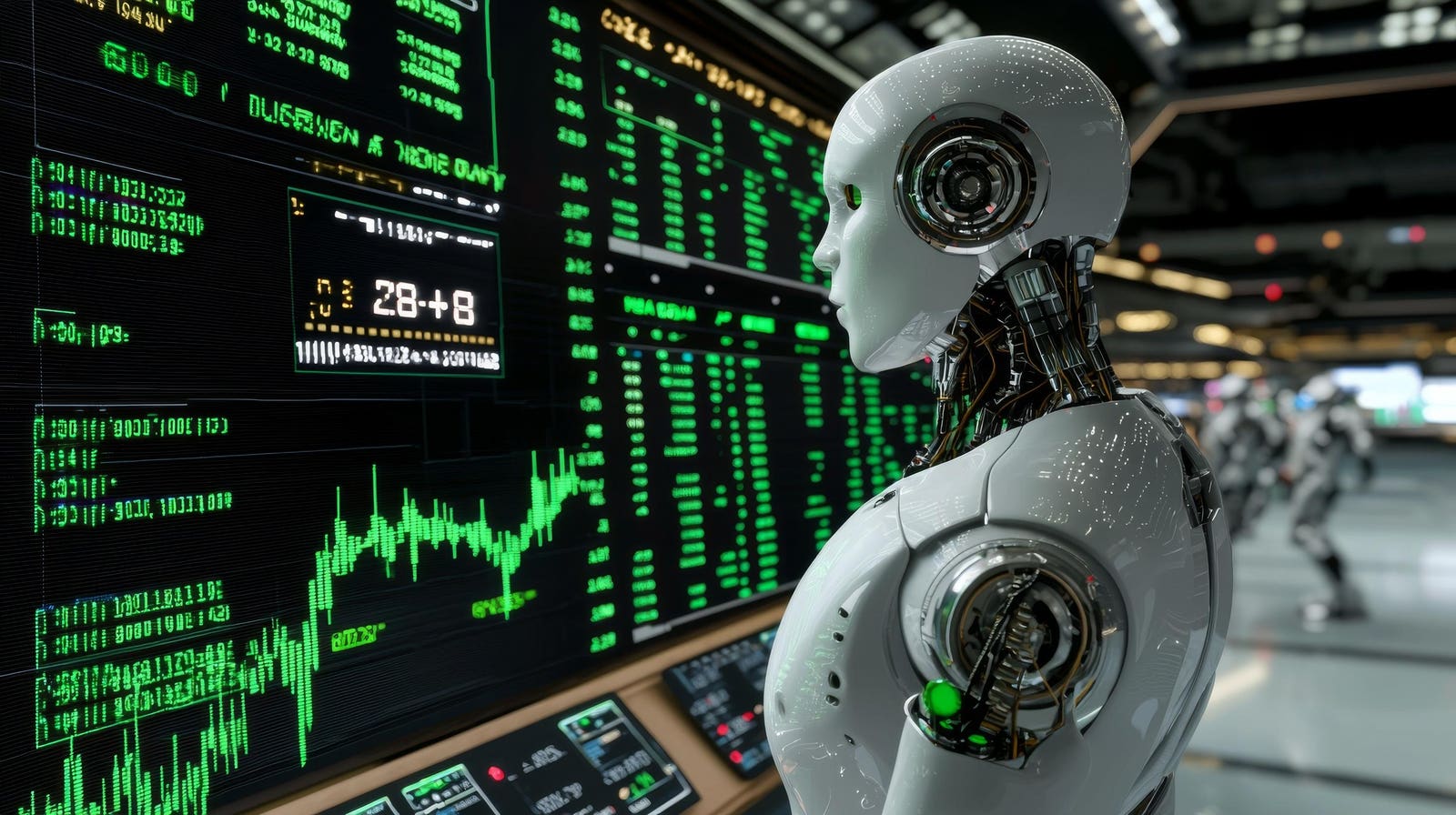Artificial intelligence is transforming financial markets at breakneck speed, but this is technological … [+]
The current AI euphoria in the stock market, fueled by companies like NVIDIA developing powerful machine learning processors, may be masking a more troubling reality. While artificial intelligence promises to revolutionize trading and risk management, it may paradoxically make our financial systems more fragile and susceptible to catastrophic failure.
“There is so much euphoria, with tens or even more than a hundred billion dollars being spent on AI. Every major investment bank on Wall Street is implementing it,” notes Jim Rickards, author of the new book Money GPT. However, he controversially claims that this widespread adoption of AI in financial markets could amplify market crashes beyond anything we’ve seen before.
Compilation error
Rickards introduces a compelling concept called the “fallacy of composition”—where actions that make sense to individual market participants can spell disaster when adopted by all. He illustrates this with an analogy: “At a football game, a fan standing up has a better view. It actually works. The problem is that everyone behind them stands up, and the next thing you know , the whole stadium is standing and no one has a better view”.
In financial markets, this phenomenon can occur during market downturns. While it may be prudent for individual investors to sell during a crash, if AI systems controlling large amounts of capital all execute similar strategies at the same time, the result can be disastrous.
The Missing Element of Man
The author claims that one of the most significant dangers stems from removing human judgment from the equation. He tells of the historical role of specialists on the New York Stock Exchange, who were tasked with keeping the markets orderly: “The specialist had to stand in front of the market when there was a wave of sellers… try to balance the market. “Today’s AI systems, he suggests, lack this nuanced human judgment.
Speed and synchronicity: A dangerous combination
While market panic is not new, AI poses unprecedented risks through its speed and synchronicity. The automated nature of AI-driven trading can accelerate market movements and create feedback loops that human traders could otherwise interrupt. As Rickards warns, “What is new is the speed with which they can occur, the amplifying effect and the recursive function.”
Beyond market crashes: The banking system at risk
The concerns extend beyond stock markets and into the banking system itself. Rickards points to the recent collapse of Silicon Valley Bank as an example of how digital technology can speed up banking. “It didn’t work over weeks and months. This happened in two days,” he notes, suggesting that AI could further accelerate such events.
The Way Forward
While the author’s warnings are stark, he points out that the solution is not to abandon AI entirely. Instead, it advocates for more sophisticated switches and regulatory frameworks. He suggests implementing “cyber” approaches that can gradually slow market activity during periods of stress rather than implementing sudden stops.
A Call for Balanced Innovation
As financial institutions rush to implement AI systems, Rickards’ analysis serves as a timely reminder of the need for careful consideration of systemic risks. While artificial intelligence provides powerful capabilities for analyzing markets and managing risk, we must ensure that these tools do not inadvertently make our financial systems more vulnerable to catastrophic failure.
The challenge ahead lies in harnessing the potential of AI while implementing safeguards against its systemic risks. As financial markets continue their technological transformation, finding this balance may be crucial to global economic stability.
